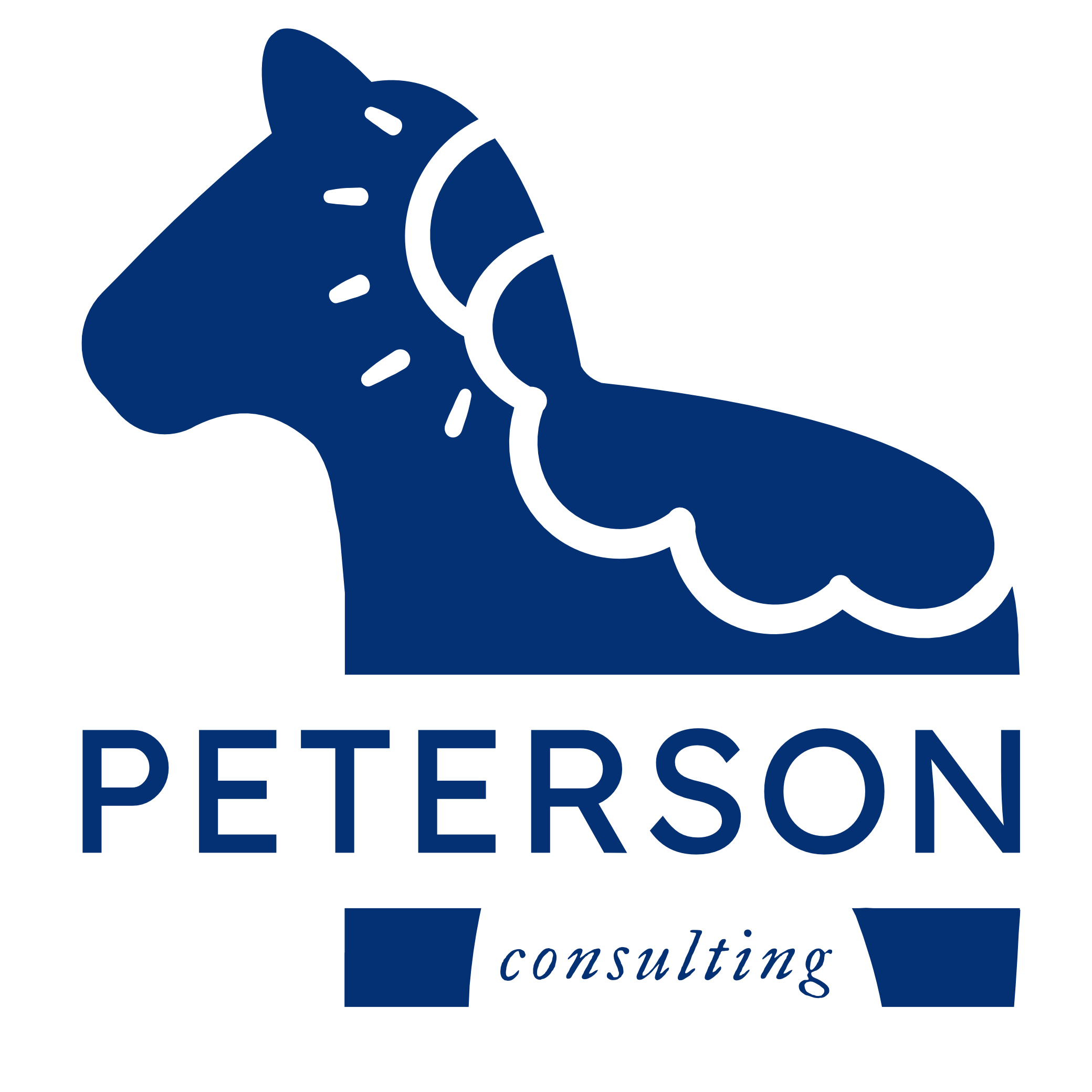How to Stop Doomscrolling & Create Digital Rest Stops in Your Workday

Signs of trauma are never far away.
For most of us, the phones sitting in our pockets represent a deep portal of doom on those particularly dark days of current events.
Rather than beat ourselves up for wasting precious time scrolling through the doom, remember that doomscrolling is our brain's way of keeping a look out for danger when we know danger is present or probable (i.e. 2020 election, school shootings, the news). For those of us who've experienced trauma, that sense of doom around the corner can keep us on edge moreso than our colleagues, and moreso than other times of safety.
If a trauma survivor is constantly on edge, then research shows that their brain is less likely to prompt good decisions. So any trauma survivor at work who wants to "perform well" and provide their business with excellent decision-making really needs to keep themselves as regulated as possible.
For trauma survivors at work, doomscrolling is not the answer, but Digital Rest Stops might point us in the right direction.
What's a Digital Rest Stop? If you've been doomscrolling or even just mindlessly scrolling on TikTok before bed and come across something like the .gif above, then you've landed on what is called a "Digital Rest Stop." Next time you scroll by one, I encourage you to take a second to notice how it changes the visceral sensations in your body. (For me, it's often a subtle relaaaxing and letting go of tense muscles.)
Digital Rest Stops can be a self-regulation tool for trauma resilience! They are generally pieces of content placed online for others to find, kinda like Easter eggs for everyone else' mental health. So below I've provided a few strategic ways that I place Digital Rest Stops throughout my workday.
This article on InsideHook makes a good point, "Love the sentiment [behind Digital Rest Stops], but if you truly want to stop doomscrolling, or want to limit your social media usage in general, you’re better off setting a timer, going outside and reminding yourself of the real world (Mahan, 2022)."
Mahan is right, nothing compares to getting off your screen, but not everyone has the luxury of doing that. For the trauma survivors with jobs that require a lot of screen time or perpetual online life, these strategic Digital Rest Stops, can nurture an environment of self-regulation throughout the workday, especially if they're placed strategically in spots where the rest and self-regulation is needed most. After all, sometimes you really do need to stay on the screen or stay on social media!
Here's what I know: If I'm consistently regulated at work, then I am emotionally prepared for the demands of entrepreneurship and more mentally focused on the tasks at hand. Plus, if I do get triggered by anything that might come my way, then a consistently regulated version of me is ready to quickly turn to self-regulation tools (rather than conversely take a slip-n-slide on the doomscroll).
"Just set a timer! Your life will be fixed!" LOL. Not everyone can just leave the office and go take a hike real quick. So if you're like me and timers don't always work for you, then these are a few of my personal favorite alternatives to timers as doomscrolling remedies.
3 Chrome Browser Plugins for Strategically Placed Digital Rest Stops in Your Workday...
- Unsplash Instant is a Chrome browser plugin that will present a beautiful photo with every new tab that you open. I've caught myself slack-jawed in awe at many of the new tabs I've opened.
- Newsfeed Eradicator, is also a Chrome browser plugin, will replace your Facebook newsfeed with a blank area and an inspirational quote. There's even a Feminist Newsfeed Eradicator for those of us with feelings about the US Supreme Court. <shakes fist at the sky!>
- Inbox When Ready, is also a Chrome browser plugin, but this will make your Gmail Inbox *vanish* upon request. Plus, it'll keep track of how many times you check your inbox every day and how long you've spent inside your inbox, which helps to reduce the impulsive doom-inboxing. ;-) They have a free and a paid plan, both are worth checking out.
Some of these little plugins can be life-altering. After trying out the Newsfeed Eradicator for 90 days, Kevin Alexander wrote this article on Medium and reported that "The air became clearer. The fog of performative outrage has cleared, and it turns out normal life — even during a pandemic — is actually pretty sunny."
Before we get too excited and think that a mere Chrome browser plugin can solve all our problems, let's take a moment to remember... CAPITALISM.
Many of these corporations (Google and Facebook) make a lot of money when we choose to spend more time on their platforms. So, yes, these little hacks can become excellent methods for self-regulation throughout a workday, especially when you really do need to get something other than doomscrolling accomplished.
But ultimately, we should be asking, "Who is really benefitting the most here?"
Yalcinkaya (2022) notes in DazedDigital that these platforms are not financially incentivized to encourage us to switch off our screens entirely. "Each click, like, and post creates content that lines the pockets of Silicon Valley execs, who have already made billions out of people’s need to connect online. So, creating additional content to escape the already overwhelming stream of content feels less like a ‘resting point’, and more like a virtual form of Stockholm syndrome (Yalcinkaya, 2022)."
In other words, while you establish these Digital Rest Stops, build mitigation techniques, and establish digital self-regulation tools throughout your workday, don't forget to keep the bigger picture in mind—YOU—the healthiest, most alive, most trauma resilient version of yourself.
- Can these tools support that version of you? Perhaps!
- Or can they facilitate your workaholic, burnout tendencies? Perhaps!
This brings me to the importance of continued trauma research, consumer awareness, and ethical business practices... a different thesis for another time. ;-)
I'm always happy to nerd out and discuss any of this in person if that interests you. Schedule a Meet-N-Greet here!
The image above links to a 50-min interview on YouTube with Dr. Lisa Coyne from McLean Hospital, a Harvard Medical School Affiliate, on the impact that social media has on our mental health. Plus, she shares how to set ground rules for digital consumption.
References
- Alexander, K. (2021, February 26). I Installed The News Feed Eradicator for Facebook-Here’s What Happened Next. Medium; The Startup. https://medium.com/swlh/i-installed-the-news-feed-eradicator-for-facebook-heres-what-happened-next-55d894303453
- Bendau, A., Petzold, M. B., Pyrkosch, L., Mascarell Maricic, L., Betzler, F., Rogoll, J., Große, J., Ströhle, A., & Plag, J. (2020). Associations between COVID-19 related media consumption and symptoms of anxiety, depression and COVID-19 related fear in the general population in Germany. European Archives of Psychiatry and Clinical Neuroscience, 2, 283–291. https://doi.org/10.1007/s00406-020-01171-6
- Fitzgerald, S. (2020, July 30). What is doom scrolling, and how can we stop? - The Washington Post. Washington Post; The Washington Post. https://www.washingtonpost.com/lifestyle/wellness/coronavirus-doom-scrolling-stop/2020/07/29/2c87e9b2-d034-11ea-8d32-1ebf4e9d8e0d_story.html
-
Good, H. (2022, July 24). Need a break? Take one with this digital rest stop. - The Washington Post. Washington Post; The Washington Post. https://wapo.st/3J58Ckf
- Here’s How Social Media Affects Your Mental Health | McLean Hospital. (2022, January 21). McLean Hospital . https://www.mcleanhospital.org/essential/it-or-not-social-medias-affecting-your-mental-health
- Huckins, J. F., daSilva, A. W., Wang, W., Hedlund, E., Rogers, C., Nepal, S. K., Wu, J., Obuchi, M., Murphy, E. I., Meyer, M. L., Wagner, D. D., Holtzheimer, P. E., & Campbell, A. T. (2020). Mental Health and Behavior of College Students During the Early Phases of the COVID-19 Pandemic: Longitudinal Smartphone and Ecological Momentary Assessment Study. Journal of Medical Internet Research, 6, e20185. https://doi.org/10.2196/20185
- Inbox When Ready. (2022). Inbox When Ready. https://inboxwhenready.org/
- Mack, D. L., DaSilva, A. W., Rogers, C., Hedlund, E., Murphy, E. I., Vojdanovski, V., Plomp, J., Wang, W., Nepal, S. K., Holtzheimer, P. E., Wagner, D. D., Jacobson, N. C., Meyer, M. L., Campbell, A. T., & Huckins, J. F. (2021). Mental Health and Behavior of College Students During the COVID-19 Pandemic: Longitudinal Mobile Smartphone and Ecological Momentary Assessment Study, Part II. Journal of Medical Internet Research, 6, e28892. https://doi.org/10.2196/28892
- Mahan, L. (2022, March 26). Can a “Digital Rest Stop” Pacify Your Doomscrolling Habit? - InsideHook. InsideHook. https://www.insidehook.com/daily_brief/internet/digital-rest-stop-doomscrolling
- News Feed Eradicator. (2022). Chrome Web Store. https://chrome.google.com/webstore/detail/news-feed-eradicator/fjcldmjmjhkklehbacihaiopjklihlgg?hl=en
- Screen Time & Your Eyes: What the Research Says | NVISION. (2022, April 7). NVISION Eye Centers. https://www.nvisioncenters.com/education/screen-time-and-your-eyes/
- Unsplash Instant - Chrome Web Store. (n.d.). Chrome Web Store. Retrieved July 25, 2022, from https://chrome.google.com/webstore/detail/unsplash-instant/pejkokffkapolfffcgbmdmhdelanoaih?hl=en
- What is Doomscrolling and How to Avoid It – Cleveland Clinic. (2020, September 1). Cleveland Clinic; Cleveland Clinic. https://health.clevelandclinic.org/everything-you-need-to-know-about-doomscrolling-and-how-to-avoid-it/
- Wu, J. (n.d.). Doomscrolling Is a Global Pastime. How Can You Stop? | Psychology Today. Psychology Today. Retrieved July 25, 2022, from https://www.psychologytoday.com/us/blog/the-savvy-psychologist/202009/doomscrolling-is-global-pastime-how-can-you-stop
- Yalcinkaya, G. (2022, April 6). Digital resting stops: the next big thing or virtual Stockholm syndrome? | Dazed. Dazed; Dazed Digital. https://www.dazeddigital.com/science-tech/article/55831/1/digital-resting-stops-the-next-big-thing-or-virtual-stockholm-syndrome


0 comments
Leave a comment